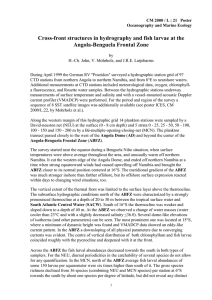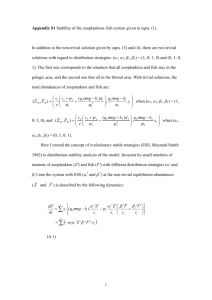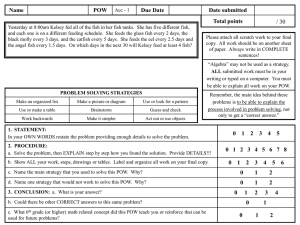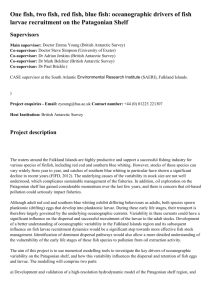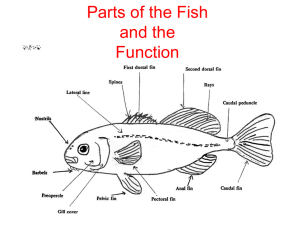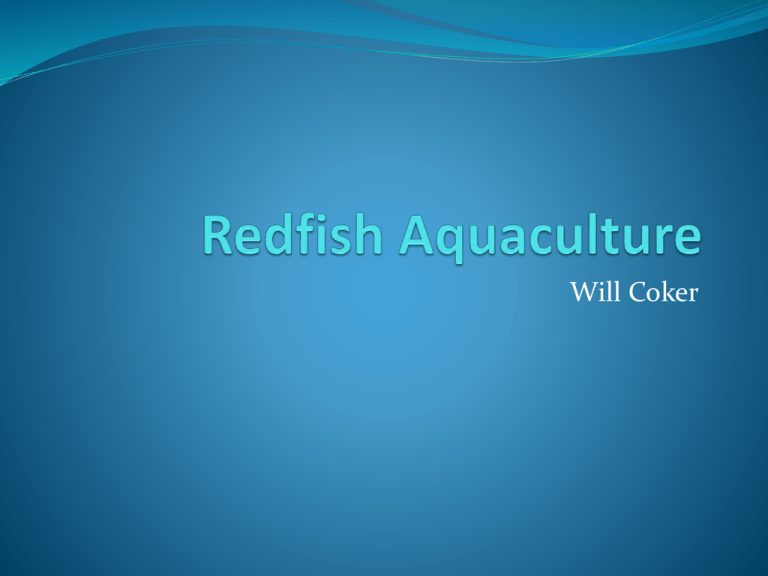
Will Coker
us
Sciaenops Ocellatus
Wide distribution spreading from the Western Atlantic to
Mexico and S. America
Found in sandy or muddy coastal waters and around
estuaries
Feed on squid, shrimp, crab, and small fish
Max weight recorded was 94.6 lb
2-6 lbs is the best eating size
Economic Importance
• Usually sold in fresh or frozen filets or sold whole at $4.19-
$4.63 per kg
• Also are raised for stock enhancement
• The major producers of red drum are China, Isreal, Ecuador,
Martinique, and the U.S.
Life Cycle
Spawn during September and
October in the Gulf or the bay
area
Females can lay >1 million
eggs
The eggs incubate for around
24 hrs before hatching into the
larval stage. The current
washes the larva into estuaries
where they settle in the grass
meadows.
Juveniles and young adults
stay in the estuaries until
they are sexually mature
around 3.5-5 yrs old
Reproduction in Captivity
S. Ocellatus adapt well to captivity
Broodstock: 4-6 fish of equal sex ratios are put into a tank
to spawn
This controlled spawning can be produced throughout the
year by manipulating the temperature and photoperiods to
mimic the fall months.
The eggs are gathered and transferred to either rearing
tanks or incubators to be hatched.
Use open water and RAS systems.
Hatchery
Once the eggs hatch the larvae
(2.2mm) are usually housed in
RAS systems.
Generally ready to feed 3 days
post hatch (dph)
Nursery
Inorganic and organic fertilizer
are added to small ponds to build
up the zooplankton.
The larvae are put into these
nursery ponds where they begin
feeding on the zooplankton.
Also put into intensive indoor
systems where they feed on
rotifers and pellet food.
The larvae stay there until 30 dph
where they then reach the juvenile
stage.
Grow-out
•Juvenile s. ocellatus are
grown in either cages or
ponds
•Red drum fingerlings (0.2
g) are stocked at 1,000
fry/m3. As the fish grow, they
may be moved into larger
cages and the density
decreased to ~400 fry/m3
•Cages yield market sized
fish (1kg) in a year and
ponds usually take 11
months
Feeds
Feeding
Larvae feed on zooplankton
For optimum growth, fish
rotifers, and Artemia
Red drum juveniles require a
diet containing 35-45 percent
protein and 12 percent fish
meal for maximum growth.
Usually fed fish pellets
throughout their juvenile and
adult life
should be fed approximately 3
to 5 percent of their body
weight daily until they reach
1pound in which 2% will
suffice.
Can potentially double their
weight each month
FCR around 2.2:1
Water Chemistry
Dissolved oxygen must be >4ppm for optimal growth
The salinity should be kept around 25-32 ppt
Optimal temp. is 25-30C
Juveniles cannot survive temperatures below 8C.
Red Drum Aquaculture
Advantages
Disadvantages
They are well adapted to
Can possibly contract and
thrive in captivity
Very hardy species
Many offspring
Not a picky eater
Fairely easily grown and
harvested
Can be harvested within one
year
spread many diseases (mainly
as exotic species)
The young are sometimes
cannibalistic in nature so
grading is necessary
Environmental waste



